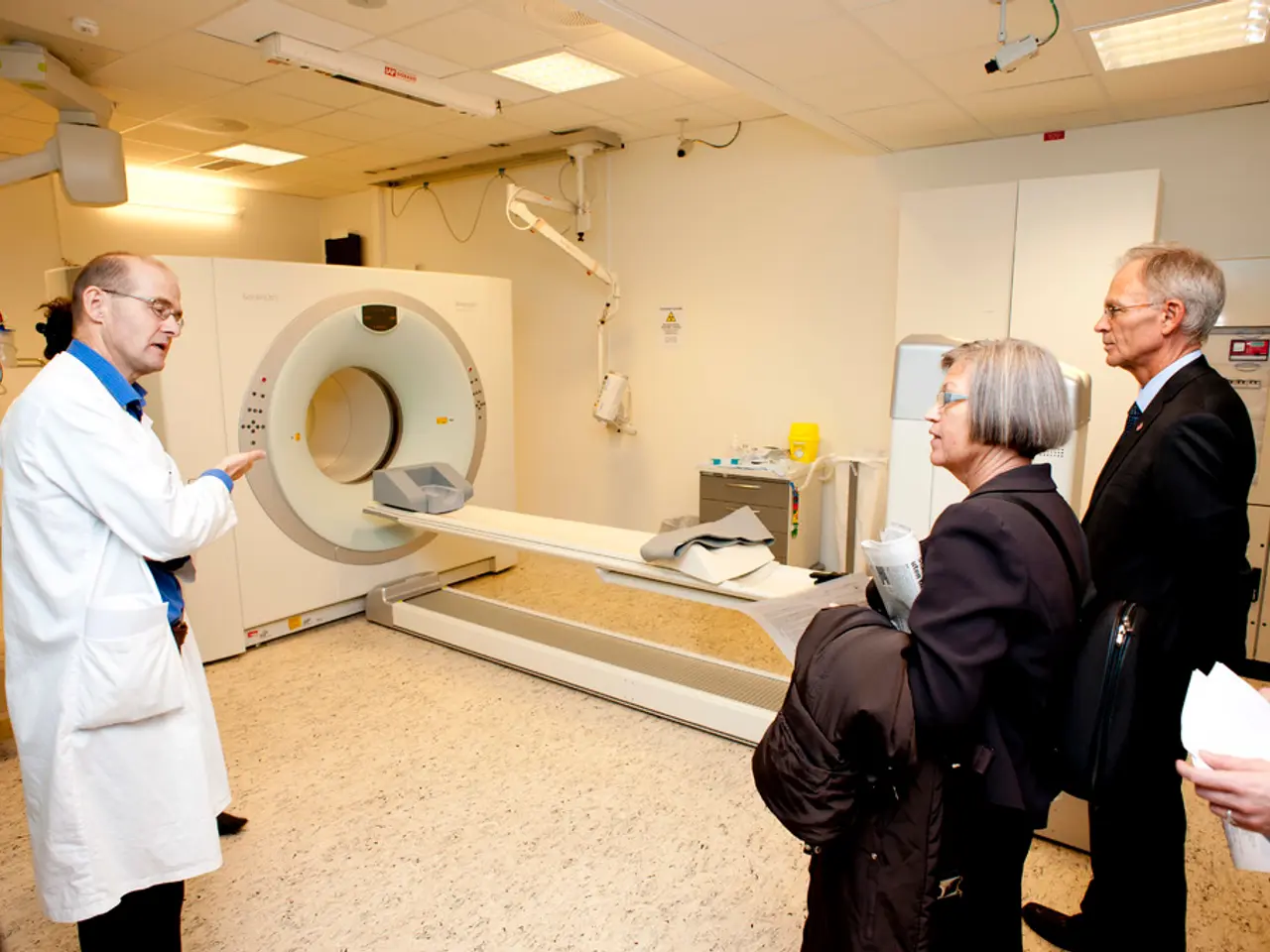Enhancing Medical Teamwork through Utilization of Collaborative Technologies
Folks often jump ship on healthcare providers if they struggle to navigate services. And guess what? 89% of patients say "ease of navigation" is a top reason for switching providers. That's right, run-ins with difficult digital tools, poor interaction with front-line staff, and struggling access to services can push a patient right out the door.
While healthcare organizations learned some valuable lessons about virtual care and improving digital access during COVID-19, they still have room to grow with a smoother, integrated collaboration strategy for both providers and patients. The need for stronger collaboration has never been more crucial, especially with ongoing labor shortages and increasing patient demands.
As it turns out, clinical communication became a significant focus during the pandemic, yet many healthcare systems took a slow approach to improving it. Now that staffing concerns have heated up, the intense pressure on clinicians has exposed the urgent need for efficient, user-friendly communication platforms to alleviate clinician burnout.
Historically, healthcare systems relied on legacy systems that couldn't handle the surge of questions and concerns from the communities they served—especially during the pandemic. To address this gap, organizations started turning to cloud-based platforms as a contact center solution. The switch to the cloud offers numerous benefits, including scalability, improved cybersecurity, and lower costs.
The modern patient is no stranger to self-service apps in other areas of life, so they expect similar options in healthcare. Patients want to schedule appointments easily, manage their medications online, pay bills, and more. And the more providers can personalize the care experience, the better. By deploying technology to help patients handle these tasks independently, staff can be freed up to focus on critical clinical assignments.
To meet and exceed patient and staff expectations, healthcare organizations must gravitate toward collaboration platforms that can consolidate fragmented communication tools and devices into a user-friendly, unified environment. Essential features for these platforms include secure messaging, chat, role-based calling, fully integrated telephony, electronic health record systems, and other supporting clinical systems. To foster collaboration, both inside and outside medical facilities, these platforms need to be integrated and cloud-based. Integration eliminates data silos and ensures that all patient information is accessible in one place, improving workflows and reducing administrative burdens.
Artificial Intelligence (AI) plays a significant role in modern collaboration solutions and will continue to be sought after. AI streamlines communication workflows, delivers information accurately, intelligently filters and prioritizes alerts, reduces alarm fatigue, and provides real-time decision support tools to help clinicians improve patient outcomes.
In the future, AI will help augment human capabilities, humans significantly improve patient care experiences, and agents will elevate their roles to become care navigators for patients. They will function as reliable representatives in the healthcare organization's care continuum and help patients take their first steps in navigating their healthcare journey.
Stay tuned for more expert guidance on how to enhance healthcare collaboration, explore the ultimate collaboration toolkit, maximize the value of collaboration tools with proper configuration, and find new ways to collaborate and care for patients. Improve your collaboration environment and care delivery now! #HealthcareCollaboration #ArtificialIntelligence #CloudComputing
References:
[1] Kanter, J., Robison, D., Sinsky, C. A., Phillips, R. S., Cochrane, J. E., & Blair, F. (2020). Advancing Clinician Well-Being and Patient Care Through Multistakeholder Interventions: The Freedom from Routine Burden Initiative (FIREBURN). JAMA Network Open, 3(7), e2014424. doi:10.1001/jamanetworkopen.2020.14424
[2] Naim, M., & Lesser, R. (2021) The United States Needs More Competition in Health Insurance. The Atlantic. Retrieved from: https://www.theatlantic.com/politics/archive/2021/02/private-health-insurance-competition/617766/
[3] Nollen, B. A., Malone, T. Y., Boland, J. J., & Wright, K. L. (2019) Multidisciplinary Team Collaboration to Compose a Rehabilitation Curriculum for Emergency Medical Services Responders: A Concept Mapping Approach. Journal of Emergency Medical Services, 54(5), 521-528. doi: 10.1016/j.jemers.2019.02.004
[4] Overhage, T. (2021, May 25) The $30 Billion Mistake: Leveraging Cloud Telemedicine Platforms in Clinical Care. Retrieved from: https://www.darkreading.com/cloud/the-30-billion-mistake-leveraging-cloud-telemedicine-platforms-in-clinical-care/d/d-id/1339055
[5] Staggers, J. X., Ellis, R., Zembillas, C., Balfour, L., Butchart, A., & Horneber, M. (2020) Interprofessional communication and collaboration in healthcare: A systematic scoping review. Clinical Medicine Insights: Healthcare, 16, 1179152820970890. doi: 10.1177/2167606020970890
- The complexity of navigating healthcare services often leads to patients switching providers, with 89% stating 'ease of navigation' as a top reason.
- Healthcare organizations should focus on improving digital access and implementing smoother, integrated collaboration strategies for both providers and patients.
- The need for stronger collaboration has become increasingly crucial due to ongoing labor shortages and increasing patient demands.
- Clinical communication emerged as a significant focus during the pandemic, yet many healthcare systems took a slow approach to improving it.
- The intense pressure on clinicians has escalated the need for efficient, user-friendly communication platforms to alleviate burnout.
- Historically, healthcare systems relied on legacy systems that struggled to manage the surge of questions and concerns from their communities.
- Cloud-based platforms are being adopted as a contact center solution to address the gap left by outdated systems.
- The modern patient expects self-service apps in healthcare, such as scheduling appointments and managing medications online.
- The more providers can personalize the care experience, the better, freeing up staff to focus on critical clinical assignments.
- Consolidating fragmented communication tools and devices into a user-friendly, unified environment is crucial for improving collaboration.
- Essential features for these platforms include secure messaging, chat, role-based calling, fully integrated telephony, and electronic health record systems.
- Integration of these platforms ensures all patient information is accessible in one place, improving workflows and reducing administrative burdens.
- Artificial Intelligence (AI) plays a significant role in modern collaboration solutions, streamlining communication workflows and providing real-time decision support.
- In the future, AI will augment human capabilities, improve patient care experiences, and elevate roles for agents as care navigators.
- Mental health is a critical aspect of overall health and wellness, with many individuals struggling due to chronic diseases and stress.
- Workplace wellness programs focusing on mental health, such as mindfulness sessions and stress management workshops, can help employees cope with burnout and improve productivity.
- Men's health issues like prostate cancer, heart disease, and mental health disorders often go unaddressed, necessitating more awareness and prevention efforts.
- Eye-health, hearing, and skin-care are essential components of health, with aging affecting these areas and leading to various conditions and disorders.
- Environmental science and climate change significantly impact our health, as air pollution, UV radiation, and other factors contribute to respiratory conditions, digestive health issues, and neurological disorders.
- Nutrition plays a vital role in maintaining overall health, with complicated dietary patterns and lifestyle choices contributing to weight management, cardiovascular health, and other persistent health issues.
- Autoimmune disorders, such as lupus and rheumatoid arthritis, need appropriate therapies and treatments to manage symptoms and prevent long-term complications.
- Cancers, like breast, colon, and lung, require early detection and timely intervention for effective treatment, with advancements in screening and diagnostic technologies improving survival rates.
- Cancer and autoimmune disorders are often associated with multiple medical conditions, necessitating a multidisciplinary team approach to patient care.
- Mental health conditions, such as depression and anxiety, are increasingly prevalent and require proper diagnosis, therapies, and treatments to ensure recovery and prevent relapse.
- Sleep disorders, including insomnia and sleep apnea, are common among adults and children, impacting overall health, productivity, and quality of life.
- Financial concerns and insurance matters can create barriers to accessing care, especially for those with chronic diseases and lower income.
- Industries like manufacturing, aerospace, retail, transportation, finance, energy, real estate, automotive, small business, investing, aviation, business, venture capital, banking and insurance, and fintech must prioritize health and wellness for their employees to improve productivity, reduce absenteeism, and attract top talent.








